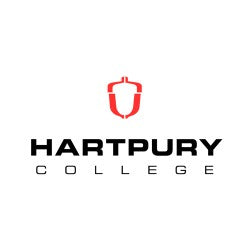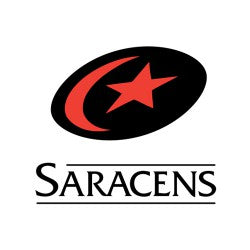What is Neuromuscular Electrical Stimulation (NMES)? What does it do?
Neuromuscular Electrical Stimulation (NMES) is a therapeutic technique that uses electrical impulses to stimulate muscle contractions. These impulses mimic the signals sent by the nervous system to muscles, causing them to contract and relax. NMES technology is widely used in physical therapy, sports medicine, and rehabilitation to enhance muscle performance, prevent muscle atrophy, and facilitate recovery from injuries (Malone et al., 2014).
How does it do it?
NMES devices generate electrical impulses that are delivered to the muscles through electrodes placed on the skin. These impulses are similar to the action potentials that naturally occur in the body to trigger muscle contractions. The electrical signals bypass the brain and spinal cord, directly stimulating the motor nerves. Proper placement of electrodes is crucial for effective NMES treatment. The electrodes are typically placed on the skin over the muscle groups that require stimulation. The exact placement may vary depending on the specific muscles being targeted and the goals of the therapy (Taylor et al., 2015).
When the electrical impulses are delivered to the motor nerves, they trigger the muscles to contract. These contractions can vary in intensity and frequency, depending on the settings of the NMES device. The contractions induced by NMES can be either isometric (static) or isotonic (dynamic), mimicking voluntary muscle movements. NMES devices often come with adjustable settings that allow users to control the intensity, frequency, and duration of the electrical impulses. This customisation ensures that the therapy can be tailored to individual needs and tolerance levels, making it suitable for a wide range of users, from athletes to patients in rehabilitation (Wainwright et al., 2019).
Are there many benefits of NMES Technology?
Yes! There are lots of benefits of NMES Technology:
Enhanced Muscle Strength and Endurance:
NMES can help improve muscle strength and endurance by providing targeted exercise to specific muscle groups. This is particularly beneficial for individuals who are unable to perform traditional exercises due to injury or surgery.
Prevention of Muscle Atrophy:
For patients who are immobilised or have limited mobility, NMES can help prevent muscle atrophy by maintaining muscle activity and promoting blood circulation.
Pain Relief:
NMES can be used to manage pain by stimulating the release of endorphins, the body's natural painkillers. It can also help reduce muscle spasms and improve overall muscle function.
Improved Circulation:
By stimulating muscle contractions, NMES enhances blood flow to the targeted areas. This increased circulation helps deliver oxygen and nutrients to the tissues, promoting healing and reducing inflammation.
Accelerated Recovery:
NMES can expedite recovery from injuries by improving muscle function and reducing swelling. It can also aid in the rehabilitation process by helping patients regain strength and mobility more quickly (Nussbaum et al., 2017).
FireFly
The Firefly Recovery leverages innovative nerve stimulation technology to significantly boost blood flow and accelerate the body's natural healing processes. By targeting specific nerves and promoting efficient circulation, it addresses key aspects of recovery, providing a comprehensive solution for a variety of users.
How is Firefly different?
The Firefly utilises OnPulse™ technology, a state-of-the-art approach to nerve stimulation. This technology specifically targets the common peroneal nerve located behind the knee. The common peroneal nerve is crucial because it controls the calf muscle pump, an essential component in facilitating blood flow from the lower extremities back to the heart. By stimulating this nerve, the device triggers the calf muscles to contract and relax rhythmically, mimicking the natural muscle movements that occur during physical activity.
Through the stimulation of the common peroneal nerve, the Firefly activates the calf muscle pump. This activation is critical as it enhances venous blood flow, ensuring that blood is effectively circulated from the lower limbs back to the heart. Enhanced blood flow is particularly beneficial in preventing blood pooling and promoting efficient circulation throughout the body, which is essential for maintaining overall cardiovascular health.
How does it benefit my training and recovery?
The improved circulation resulting from the nerve stimulation is a key advantage of the Firefly. Enhanced blood flow ensures that more oxygen-rich blood reaches muscles and tissues, which is vital for delivering the necessary nutrients required for tissue repair and recovery. This efficient delivery system also aids in the removal of metabolic waste products such as lactic acid, which can accumulate in muscles following strenuous physical activity. By promoting the clearance of these waste products, the device helps reduce muscle fatigue and soreness.
Increased blood flow also plays a significant role in reducing swelling and inflammation in affected areas. When blood circulation is enhanced, it helps to flush out excess fluids and inflammatory mediators that contribute to pain and swelling. This is particularly beneficial for individuals recovering from injuries or surgery, as it can alleviate discomfort and promote faster healing.
With improved blood flow and reduced inflammation, the body’s natural healing processes are accelerated. This leads to faster muscle recovery, reduced soreness, and quicker rehabilitation from injuries. The Firefly supports the body's innate ability to heal itself, making it an invaluable tool for athletes, post-surgery patients, and anyone experiencing chronic pain or circulatory issues.
Is Firefly easy to use?
Firefly is designed with user convenience in mind. The device features simple controls that allow users to easily adjust the stimulation level to suit their individual comfort and recovery needs. It's easy to apply and the device's design ensures that it stays securely in place during use, providing consistent stimulation for optimal results. Its design allows for convenient use at home, at work, or on the go. This portability ensures that users can benefit from continuous recovery support without being confined to a specific location. Whether you're traveling, working, or simply relaxing at home, the device can be used discreetly and comfortably.
Who's it suitable for?
With the intuitive design and ability to turn the device on or off and modify the intensity of the stimulation with ease, the Firefly device is accessible for individuals of all ages and technical abilities. Offering a non-invasive and drug-free solution for enhancing recovery makes it a safe and accessible option for a wide range of users, including athletes, individuals recovering from surgery, and those dealing with chronic conditions that affect circulation. By avoiding invasive procedures and pharmaceuticals, the device minimises the risk of side effects and complications, providing a natural and effective approach to recovery.
References
- Malone, J. K., Blake, C. and Caulfield, B. M. (2014) Neuromuscular electrical stimulation during recovery from exercise: a systematic review. The Journal of Strength & Conditioning Research, 28 (9), pp. 2478-2506.
- Nussbaum, E. L., Houghton, P., Anthony, J., Rennie, S., Shay, B. L. and Hoens, A. M. (2017) Neuromuscular Electrical Stimulation for Treatment of Muscle Impairment: Critical Review and Recommendations for Clinical Practice. Physiother Can, 69 (5), pg. 1-76.
- Taylor, T., West, D. J., Howatson, G., Jones, C., Bracken, R. M., Love, T. D., Cook, C. J., Swift, E., Baker, J. S. and Kilduff, L. P. (2015) The impact of neuromuscular electrical stimulation on recovery after intensive, muscle damaging, maximal speed training in professional team sports players. Journal of Science and Medicine in Sport, 18 (3), pp. 328-332.
- Wainwright, T. W., Burgess, L. C. and Middleton, R. G. (2019) Does neuromuscular electrical stimulation improve recovery following acute ankle sprain? A pilot randomised controlled trial. Clinical Medicine Insights: Arthritis and Musculoskeletal Disorders, 12, pg. 1179544119849024.
For more information on Firefly please click this link. If you've missed any of the articles from this sport science series, you can find them here.
Written by Joe Jackson, June 2024



































